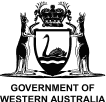Westport has partnered with the Western Australian Marine Science Institution (WAMSI) to deliver the $13.5 million WAMSI-Westport Marine Science Program. This 3-year program is developing the latest data, information and modelling on the complex environmental systems and community values associated with Cockburn Sound.
Project 2.2 Resilience of seagrass Posidonia sinuosa is negatively affect by high levels of burial of dredged material
Research theme: Benthic habitat and communities
Researchers: C Webster, N Said, T Dunham, A Bywater, S Strydom, K McMahon
Publication date: September 2024
Impacts of dredged material on local seagrass
Dredging processes, used to develop and support marine infrastructure, stir up sediment in the water, which can lead to ‘burial’ of benthic habitat like seagrass.
Due to insufficient information, the impacts of sediment burial on some seagrass species (e.g. Posidonia sinuosa) has remained largely unknown. This research study looked to rectify this by investigating the impacts of different levels of sediment on a local seagrass common within Cockburn Sound (P. sinuosa) and establish thresholds for the purpose of environmental impact assessment and monitoring programs.
The study looked to understand the response of P. sinuosa to the impact of burial, within a 2, 4 and 8 week period. It also looked how P. sinuosa responded in the recovery phase, over a 5 and 8 week period. Different depths, between 1 cm and 16 cm were also assessed.
What the report found
- Sediment burial levels above 8cm had significant decline in growth rate, which did not improve when sediment was removed.
- Sediment burial levels from 1 cm to 4 cm no adverse effects on the physiology, leaf and shoot density, and biomass of sinuosa over an 8-week period.
- Growth rates can be a reliable early warning indicator in monitoring programs of seagrass resilience.
How Westport will use the report
This report will be used by Westport, in conjunction with other seagrass related research, to inform Westport’s dredging management plan, environmental impact assessments and planning for a substantial seagrass restoration program.
Read the full report here.





